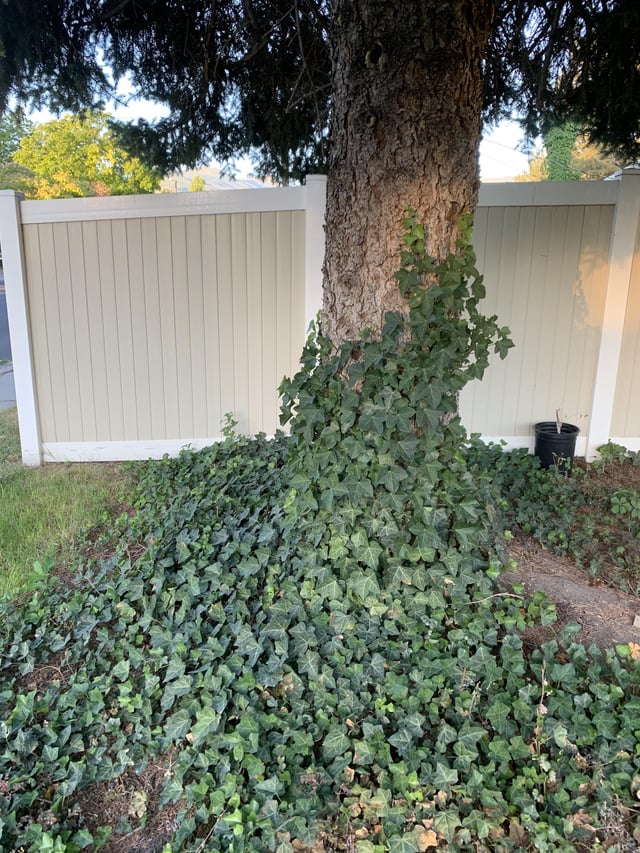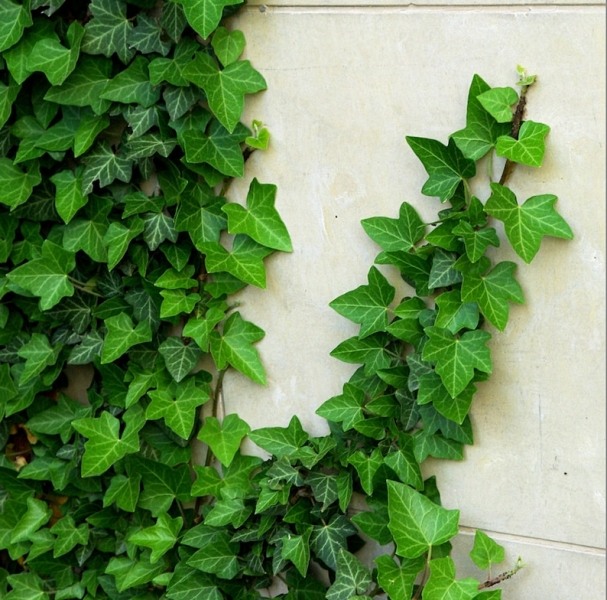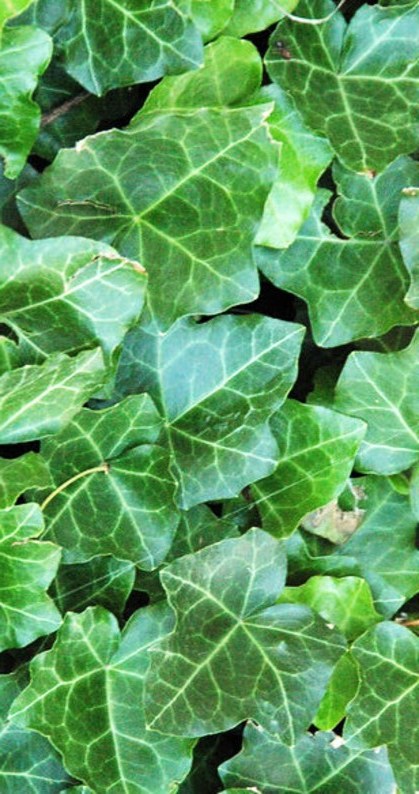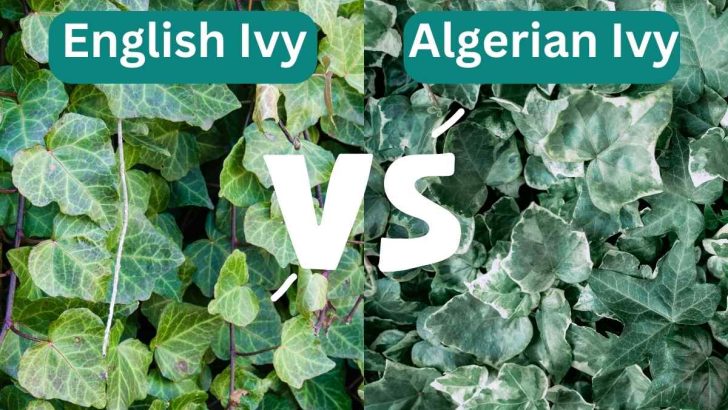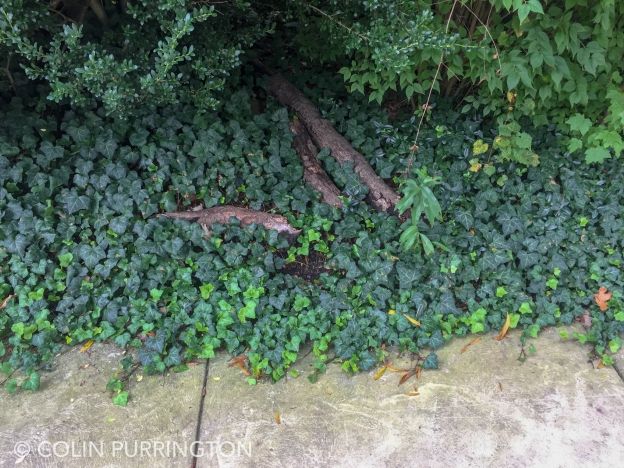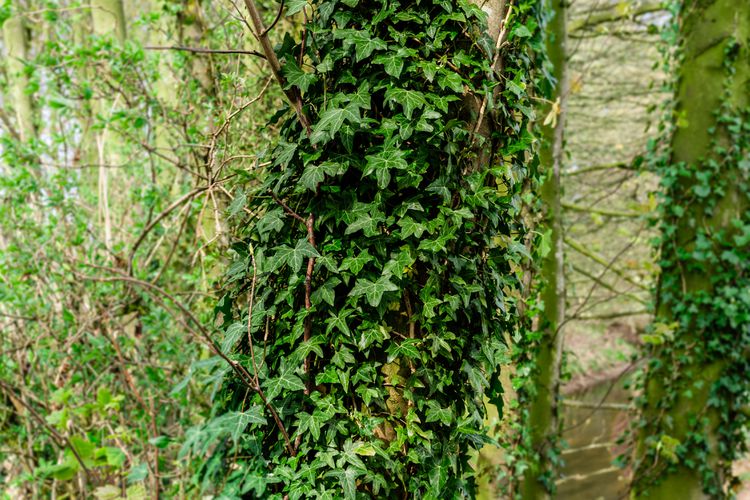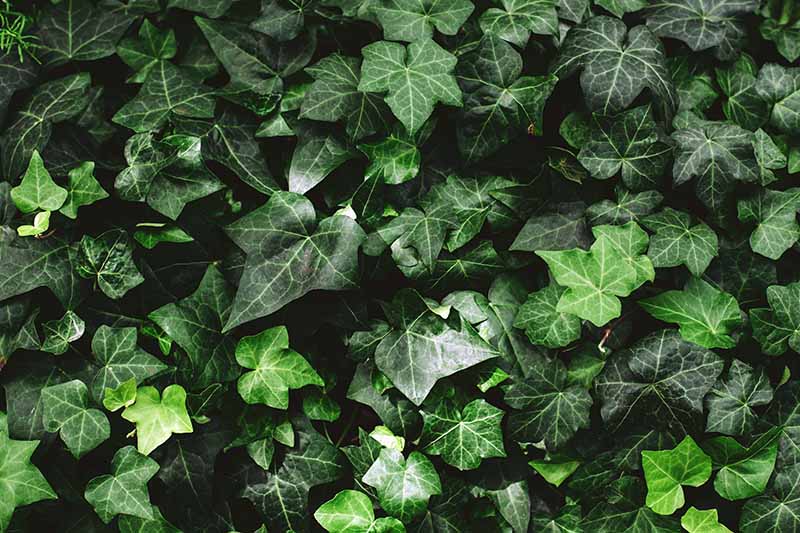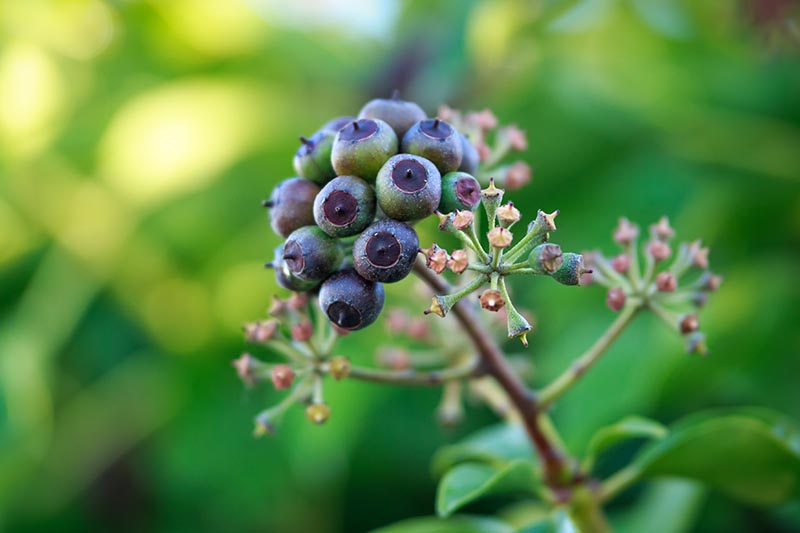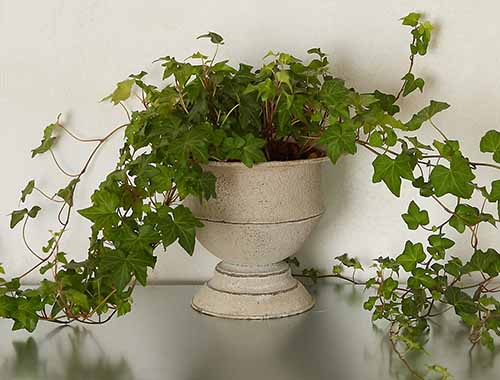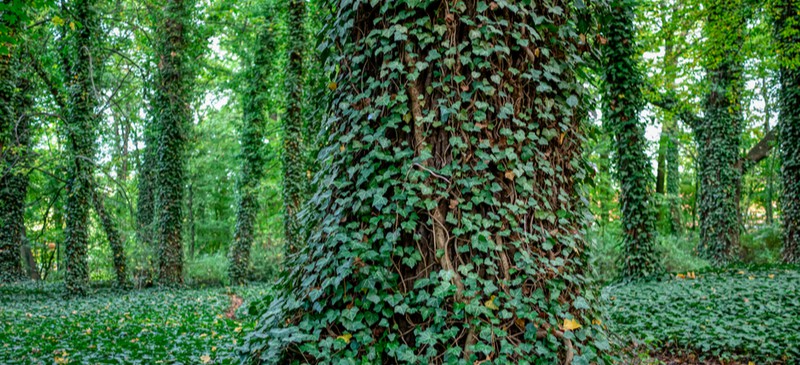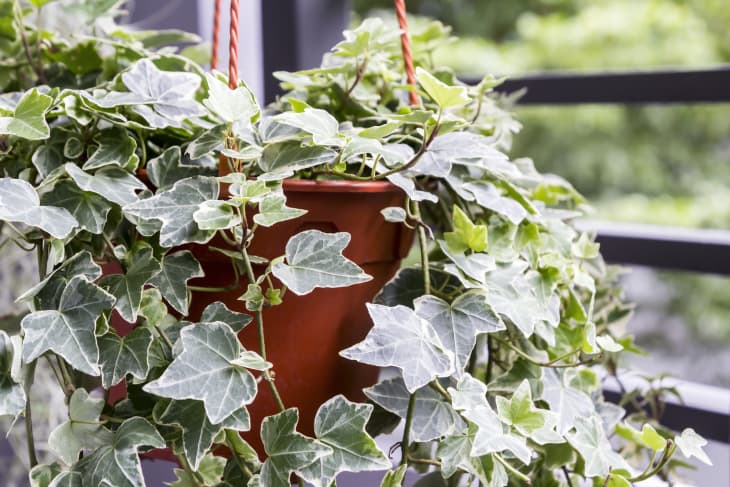English Ivy
| ivy |
It is a evergreen, perennial vine, see how the English ivy looks like in the garden and landscape.
English Ivy is suitable for growing in USDA hardiness zones: 5a, 5b, 6a, 6b, 7a, 7b, 8a, 8b, 9a, 9b, 10a, 10b. Other winter zone scales for planting this ivy are ANBG: 1, 2, 3, 4; RHS: H7, H6, H5, H4, H3, H2; PHZ: 6a, 6b, 7a, 7b, 8a, 8b, 9a.
Ivy details
| Plant type | vine, ornamental, groundcover, toxic, containers | ||||||||
| Life cycle | perennial, evergreen | ||||||||
| Sun needs | shade, part shade | ||||||||
| Growth habit | trailing, spreading | ||||||||
| Height at maturity | 15 sm - 20 sm | ||||||||
| Spacing | 45 sm - 60 sm for mass plantings | ||||||||
| Soil type | loamy, sandy, clay, silty | ||||||||
| Soil moist/drainage | well drained moist | ||||||||
| Soil PH | 5.5 - 6.5 (moderately acidic - neutral) | ||||||||
| Water needs | average, low when established | ||||||||
| Maintenance / care | low, average | ||||||||
| Resistance to | deer, drought, heat, insect, deep shade | ||||||||
| Gardens types | container | ||||||||
Winter hardiness zones:
| |||||||||
 English Ivy, botanuc name Hedera helix the common ivy, European ivy, or just ivy, is a species of flowering plant of the ivy genus, native to most of Europe and western Asia. Is very similar to algerian ivy.
English Ivy, botanuc name Hedera helix the common ivy, European ivy, or just ivy, is a species of flowering plant of the ivy genus, native to most of Europe and western Asia. Is very similar to algerian ivy.
English Ivy is a moderate to fast-growing large-leafed evergreen vining plant with attractive glossy, triple-lobed dark green leaves on vines that trail, climb, and cascade. A highly ornamental vine great for use as a groundcover or as a spiller plant in container gardens.
Hedera helix ivy forms a dense carpet of evergreen foliage, English Ivy is ideal for use as a groundcover in landscape borders and as a soil stabilizer on embankments, hillsides and slopes for erosion control. Its vines will also cling to and climb brick, stone, wooden and other walls with porous surfaces to create an attractive "live wall".
The plant will eventually bear insignificant greenish flowers, but it is grown primarily for its evergreen leaves. Keep a watchful eye on children and pets because English ivy is toxic to humans and animals.
English Ivy is easy to grow in most any moist but well-drained soil of average to low fertility and shade or part shade. Established plantings are very drought tolerant.
Ivy plants can be invasive so make sure to control their spread when growing near woodland areas. The second negative moment of planting ivy is that hordes of Asian tiger mosquitoes hide in it what can become a problem in some climatic zones.
Ivy in container
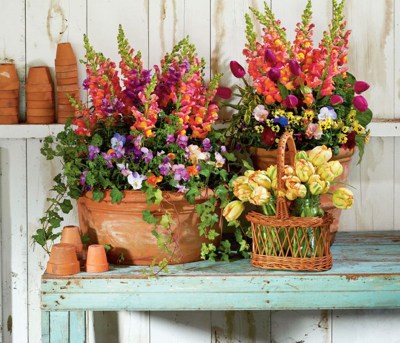 Snapdragons, Penny Violas, Tulips, Parsley, and Ivy is one of the beauties of container gardening is the ability to create visual variety.
Snapdragons, Penny Violas, Tulips, Parsley, and Ivy is one of the beauties of container gardening is the ability to create visual variety.
Containers are the perfect canvas for a unique color, texture, and composition approach. These showy snapdragons add height to your containers in a cacophony of bold colors.
They pair well with a mixture of flowers that will act as your fillers and spillers, including Penny violas, tulips, parsley, and ivy.
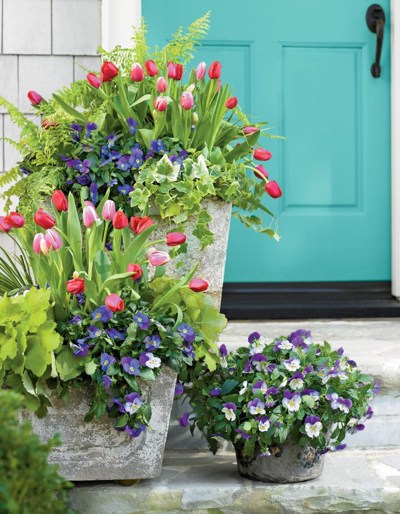 Tulips, Pansies, Ivy, and Fern will full of life you garden when you have some 'Tiger' fern (a selection of Boston fern) in your container garden. Pair it with your tulips, Lavender Blue' and 'Purple Wing' Plentifall pansies, Acorus, heuchera, and variegated ivy.
Tulips, Pansies, Ivy, and Fern will full of life you garden when you have some 'Tiger' fern (a selection of Boston fern) in your container garden. Pair it with your tulips, Lavender Blue' and 'Purple Wing' Plentifall pansies, Acorus, heuchera, and variegated ivy.
These shaped concrete pots enhance any outdoor environment. Their angled geometry pairs well with their tops' color and movement sprouting out.
Let the plants grow and flow — the containers keep them just where you want them, creating a great harmony of color, and, as they drape over the edges, you'll see where Plentifall pansies got their name.
English Ivy @ wikipedia.
English Ivy in the landscape and gardening
Also ivy species
| 1 | Why you should get rid of your English ivy |
| 2 | The ivy is medium poisonous to humans, cats, dogs and horses |
